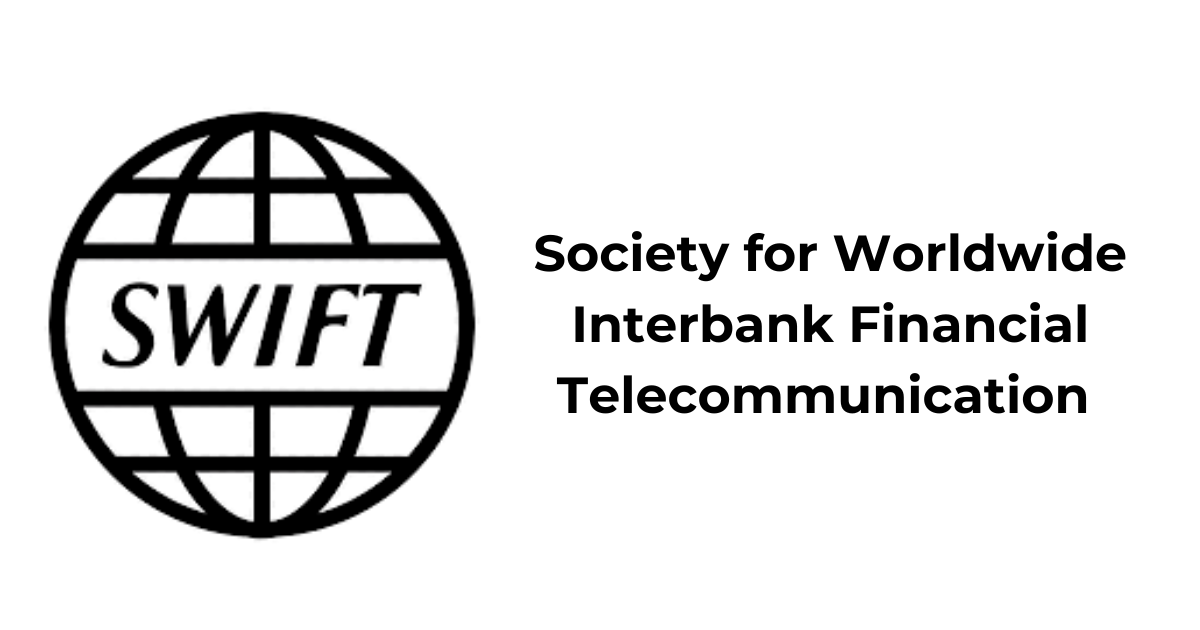It’s not surprising to see legacy firms looking to adopt and /or co-opt a technology that represents a fundamental threat to their existence
When most people think about blockchain technology, they imagine a system that allows global transactions without needing a central body like banks. This can be traced back to the ethos of bitcoin which was created so people could carry out peer-to-peer transaction without needing banks. But with the creative innovations the blockchain has offered and the untapped opportunities yet to be explored, some traditional financial companies and have taken the initiative to adopt this tech using payment giant -SWIFT.
Society for Worldwide Interbank Financial Telecommunications (SWIFT)

SWIFT was founded in the 1970s with the vision of creating a global financial messaging service. Over 230 banks from 15 countries came together to form a cooperative utility; and there SWIFT was initiated, which is headquartered in Brussels, Belgium. Since its inception, SWIFT has grown to be a global financial infrastructure utilized in 200+ countries, services more than 11,000 institution clients around the world and transmits over 42 million financial messages per day and over 8.4 billion every year.
Need for a better financial messaging service
Despite operating for over 40 years, there were critic concerns regarding its longevity in creating payment solutions. For some, the system was becoming obsolete considering the cumbersome messages it needed to process, the system became utterly slow. On May 26, 2022 an article from Cointelegraph reported that Michael Miebach – MasterCard CEO told an audience of blockchain executives that he expects SWIFT to fold up in five years’ time. According to the report, Michael was a panel speaker at the Global Blockchain Business Council’s where he was asked about SWIFT existence in five years and he replied “NO”, which for some, was a shocking response.
Regardless of the critics, SWIFT has been able to evolve in its operations by focusing on CBDCs (Central Bank Digital Currencies), Blockchain and Distributed Ledger Technology (DTL). On October 5, 2022; SWIFT posted an article about an experiment on the concept of CBDCs and digital tokens that represent ownership of stock, bond, and illiquid assets; and how they would be connected into the financial ecosystem without causing disruption. The goal of this experiment was to create a gateway that connects various CBDC networks with existing payment systems.
“Digital currencies and tokens have huge potential to shape the way we will all pay and invest in the future. But that potential can only be realized if the different approaches that are being explored have the ability to connect and work together.” – Tom Zschach, Chief Innovation Officer at SWIFT.
Later that same year, SWIFT partnered with decentralized blockchain price feed and data provider – Chainlink to work on a proof-of-concept (PoC) project which would allow traditional finance firms the ability to transact across blockchain networks. The PoC project would be utilizing Chainlink’s Cross-Chain Interoperability Protocol (CCIP) which would enable SWIFT messages to instruct on-chain token transfers, helping the interbank network to communicate across nearly every EVM blockchain.
“Proof-of-concept is the process of verifying whether a blockchain project has the potential in a real-world situation.”
Further progress
Last week, SWIFT announced via a blog post about its intention to collaborate with its members in exploring blockchain interoperability. This experiment would be carried out to test how financial institutions can transfer tokenized assets over public and private blockchains.
“Institutional investors increasingly are considering investments in tokenized assets as they seek new forms of value – but they face a complex challenge. These investments are tracked on a diverse range of blockchain networks that are not interoperable – each has its own functionality or liquidity profile, which creates significant overhead and friction in managing and trading the assets.” – SWIFT.
For the market to scale, financial institutions need to be able to easily interact with multiple blockchain-based networks in a secure and trusted way, just as they would do today when facilitating the trading of financial assets. Not only would this help firms simplify their architecture and operations, but it also minimizes investment cost and reduces risk of technology obsolescence.
Participants in this experiment included: Australia and New Zealand Banking Group Limited (ANZ), BNP Paribas, BNY Mellon, Citi, Clearstream, Euroclear, Lloyds Banking Group, SIX Digital Exchange (SDX) and The Depository Trust & Clearing Corporation (DTCC).
“In such a highly fragmented ecosystem, it would simply not be feasible for financial institutions to connect to each and every platform individually. That’s why the community is working with SWIFT to develop an interoperability model that would enable access to different platforms globally.” – Tom Zschach, Chief Innovation Officer, SWIFT.
The first use case of the experiment will involve the transfer of tokenized assets between two wallets on the Ethereum Sepolia testnet. The second use case involves the transfer of tokenized assets from a public blockchain like Ethereum to a permissioned blockchain. The final use case will test the transfer of tokenized assets from Ethereum to another public blockchains.
"It'll be a gradual increase over time. As more and more banks begin to interface with the private chains of other banks and those private chains connect to public chains, you'll see a gradual increase over time. Now we're in mid stages" - Sergey Nazarov, Founder Chainlink.
Is this good for the crypto community and adoption?
“It’s not surprising to see legacy firms looking to adopt and /or co-opt a technology that represents a fundamental threat to their existence; in fact, it should be applauded.” – Matthew Hougan, Chief Investment Officer at Bitwise Asset Management, told Cointelegraph. Hougan believes that all financial goods will move across blockchain networks in the future and considers SWIFT actions to integrate blockchain tech to financial settlement as positive news. “Every time an entrenched incumbent recognizes that it has to think about the implications of blockchain technology, it makes it easier for the next one to do so. This is another brick in the wall.” – He added.
Hougan wasn’t the only one who saw the integration as a good thing; Lex Sokolin, Head Economist at Consensys said “The purposes of blockchains are different and varied. Generally, I do think more integration implies more paths to adoption.”






Comments ()